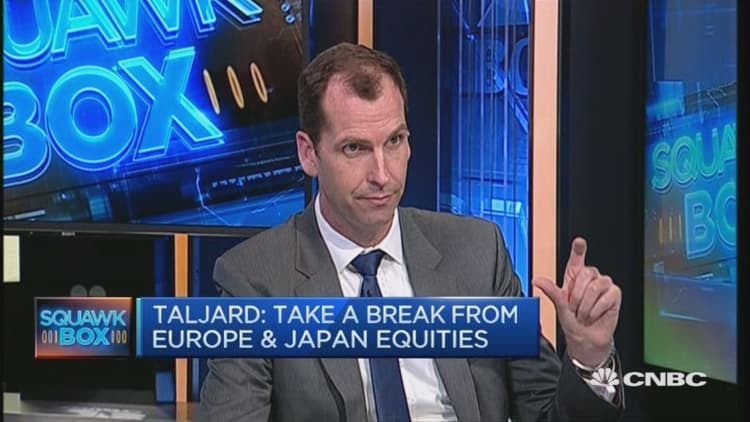
Have we reached peak quantitative easing? Moves in currency markets seem to suggest that, according to an investment manager.
The Japanese yen has hit a 17-month high against the U.S. dollar on Thursday despite aggressive monetary stimulus from the Bank of Japan (BOJ) – a sign that the market is experiencing "QE (quantitative easing) fatigue," said Garth Taljard, head of multi-asset product for Asia at Schroders.
"Europe and Japan in particular have been very strong in the last three years because of this QE intervention and a lot of monetary stimulus, but that story is looking tired," Taljard told CNBC's "Squawk Box".
The BOJ stunned the markets in late January when it introduced negative interest rates for the first time, but the effect on the yen has been short-lived as the currency hit a fresh 17-month high of Y109.15 on Thursday.
Schroders is pulling back allocations in Europe and Japan and is entering the U.S. equities market instead.
"We risked up our portfolios in late February; we thought with the stability, there may be a chance to add some more risk," he said.
Schroders added some U.S. equities to its portfolios, Taljard said. It also added corporate bonds to its portfolios.
Taljard said markets are now experiencing some "good volatility" with the recent rally and stabilizing after convulsing early in the year over concerns about China's growth.
Investor focus has now shifted to central bank decisions, with the spotlight on upcoming European Central Bank and Bank of Japan meetings this month.


